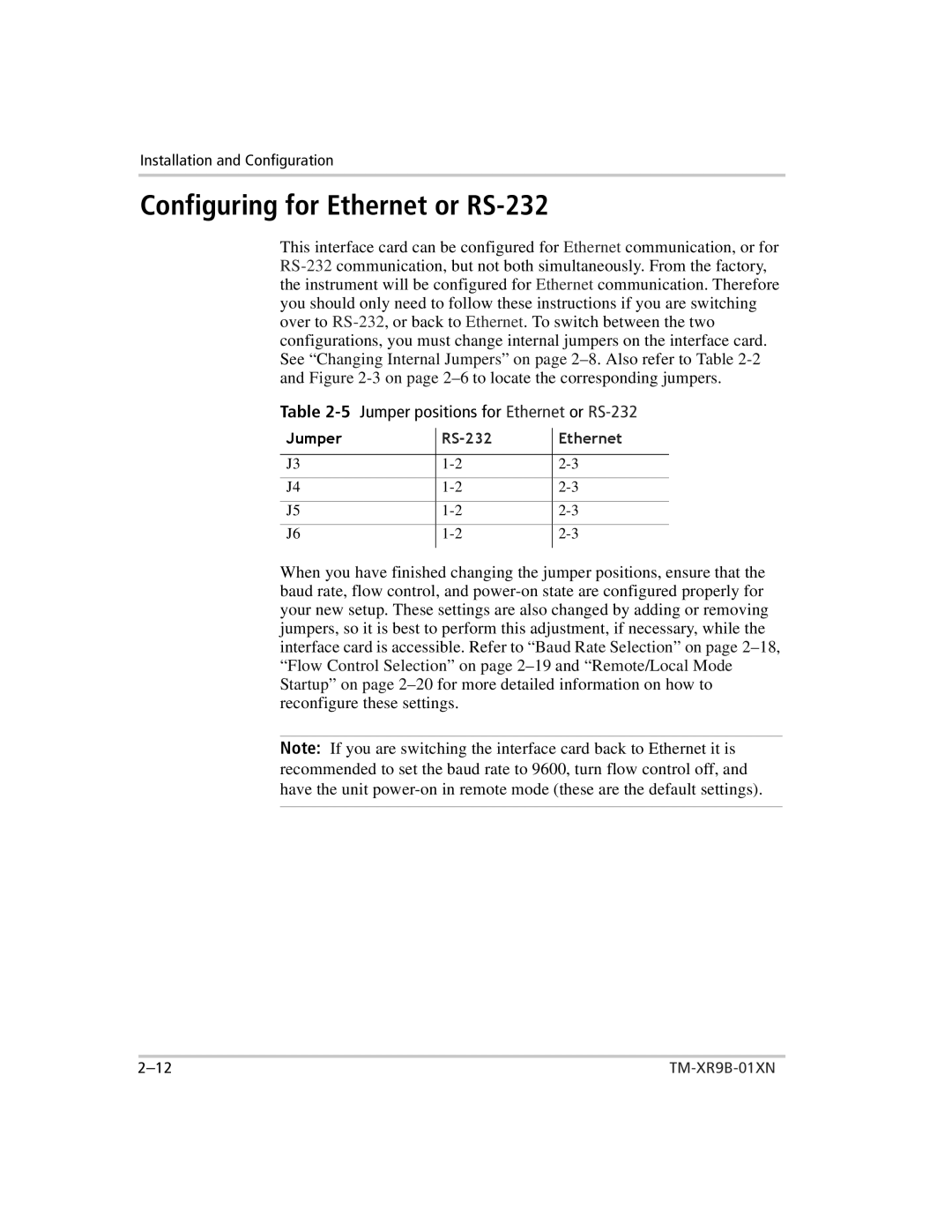Installation and Configuration
Configuring for Ethernet or RS-232
This interface card can be configured for Ethernet communication, or for RS-232communication, but not both simultaneously. From the factory, the instrument will be configured for Ethernet communication. Therefore you should only need to follow these instructions if you are switching over to RS-232, or back to Ethernet. To switch between the two configurations, you must change internal jumpers on the interface card. See “Changing Internal Jumpers” on page 2–8. Also refer to Table 2-2and Figure 2-3 on page 2–6to locate the corresponding jumpers.
Table 2-5Jumper positions for Ethernet or RS-232
When you have finished changing the jumper positions, ensure that the
J3 | 1RS-2-232 | Ethernet2-3 | |
| | | |
J4 | 1-2 | 2-3 | |
| | | |
J5 | 1-2 | 2-3 | |
| | | |
J6 | 1-2 | 2-3 | |
Jumper | | | |
| | | |
ba | d rate, flow control, and power-on state are configured properly for |
yo | n w setup. These settings are also changed by adding or removing |
jumpers, so it is best to perform this adjus m nt, if necessary, while the interface card is accessible. Refer to “Baud Rate Selection” on page 2–18, “Flow Control Selection” on page 2–19and “Remote/Local Mode Startu ” on page 2–20for more detailed information on how to reconfigure these settings.
Note: If you are switching the interface card back to Ethernet it is recommended to set the baud rate to 9600, turn flow control off, and have the unit power-on in remote mode (these are the default settings).

